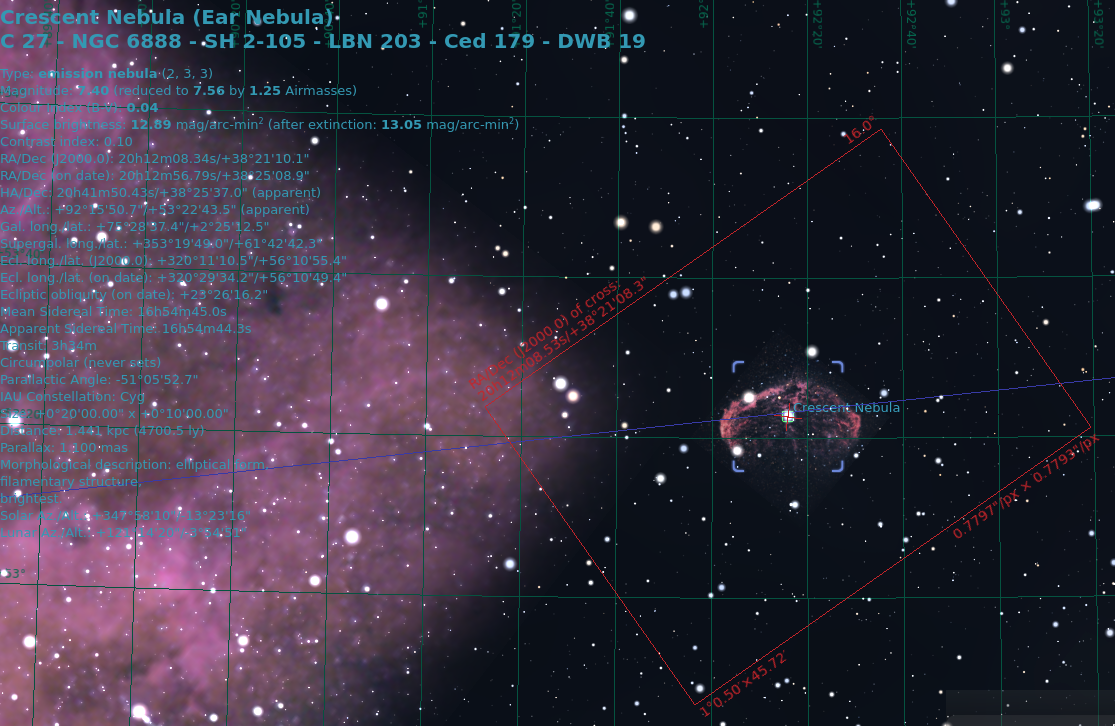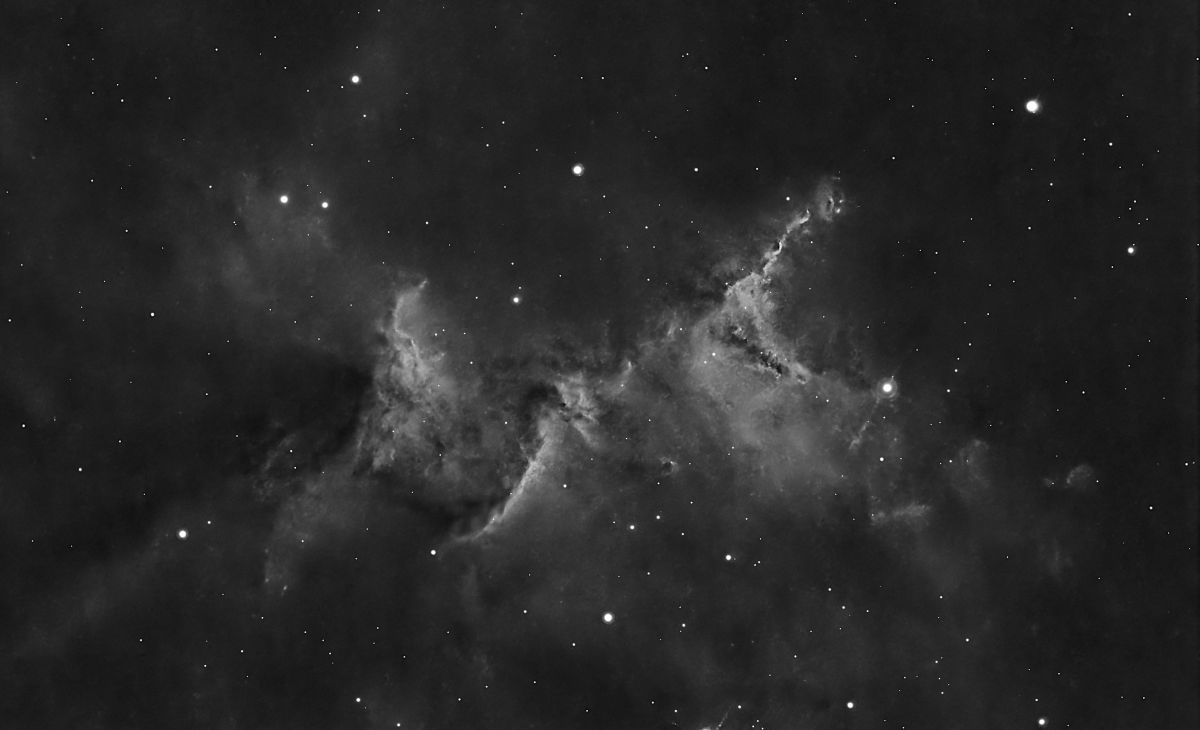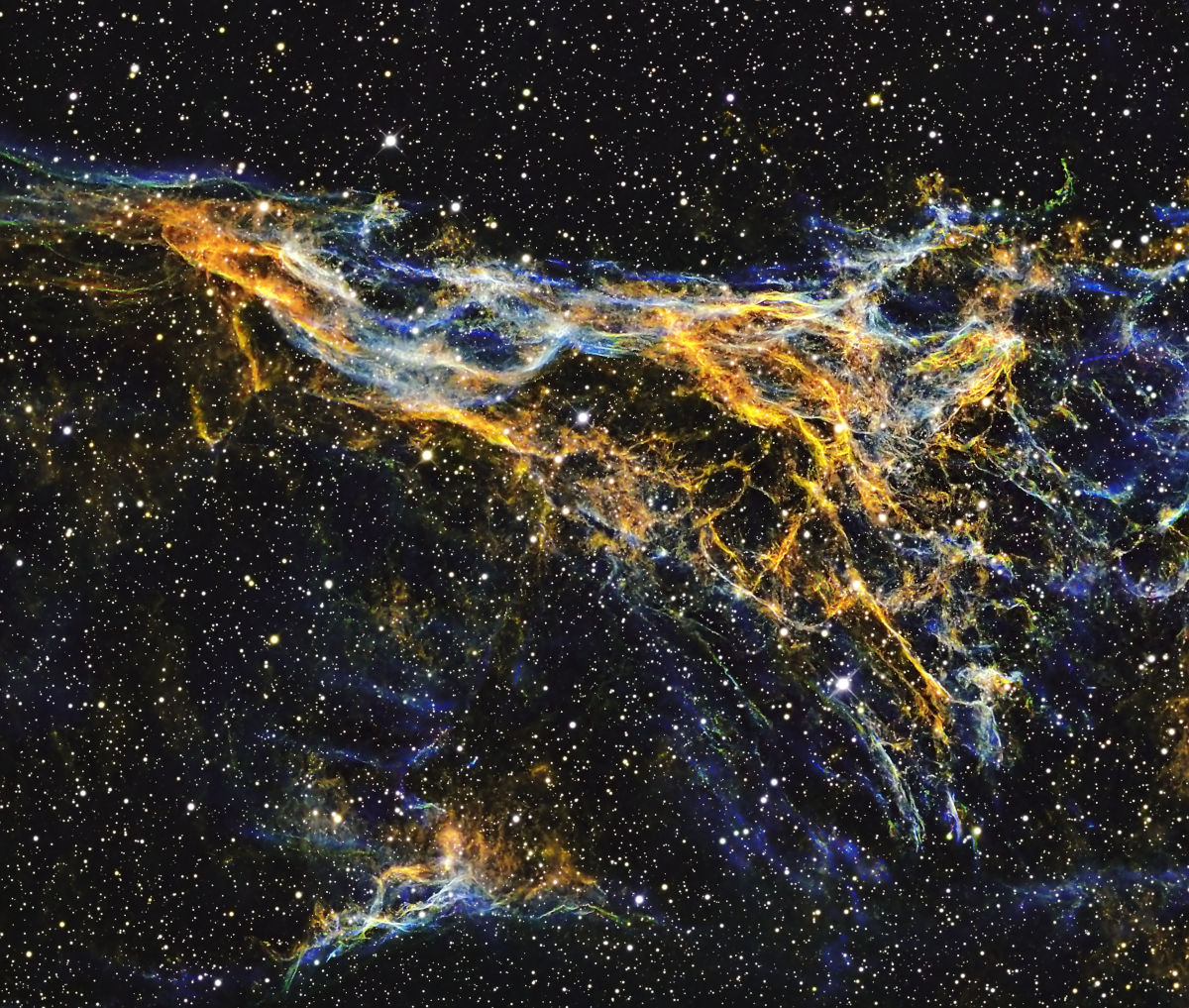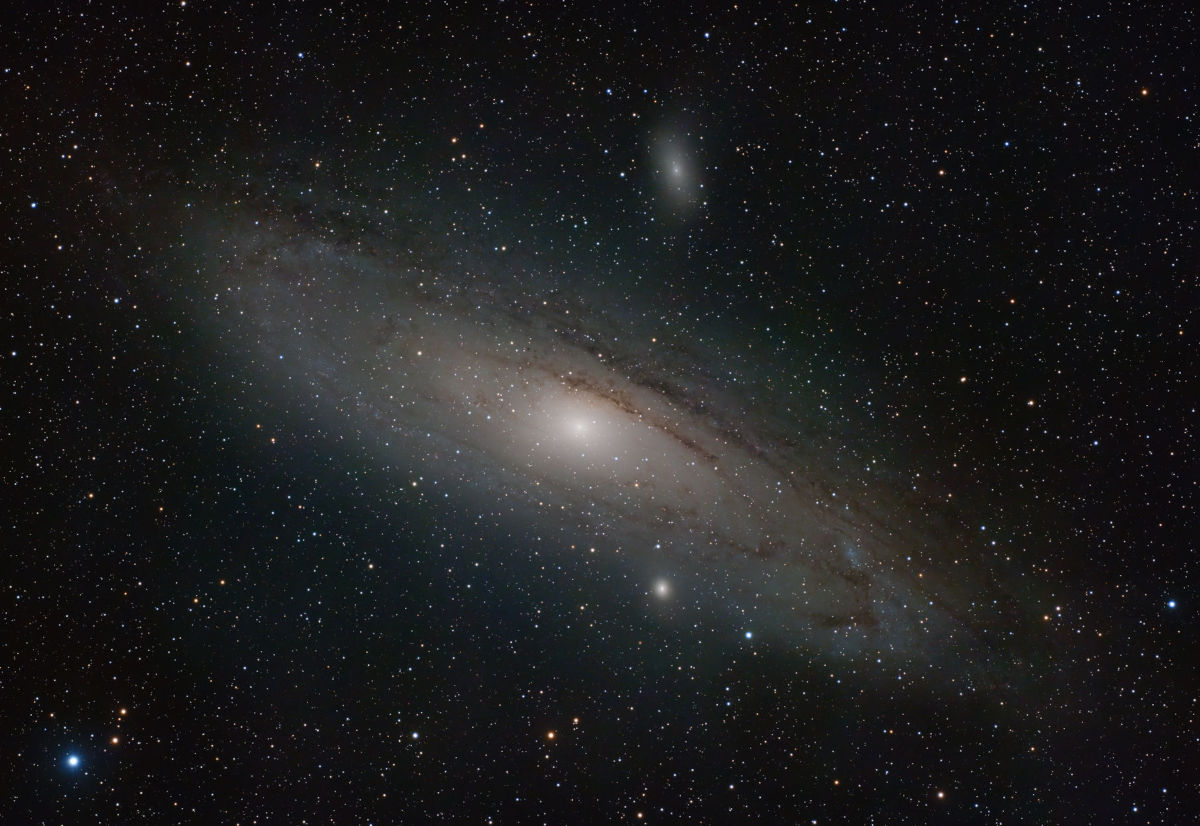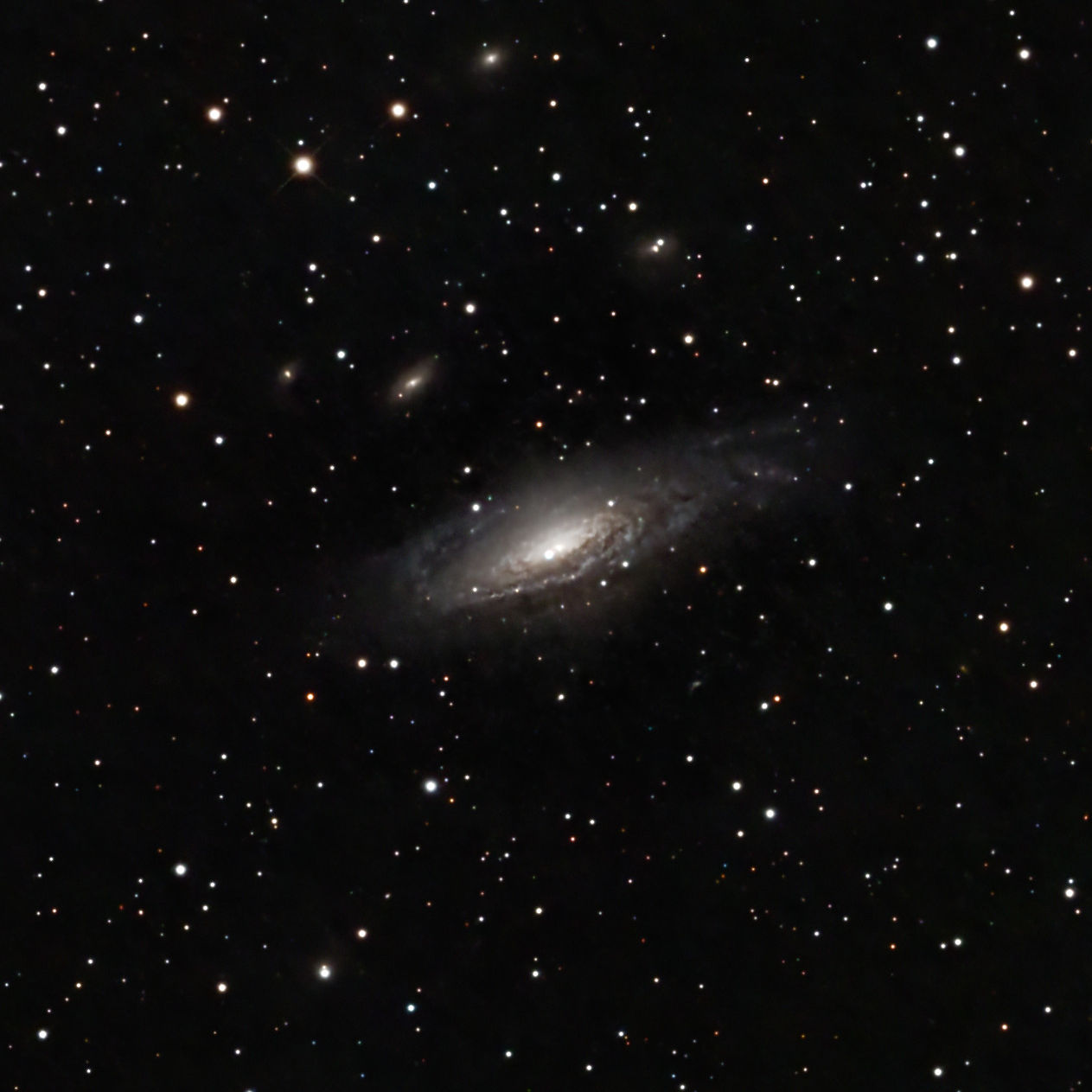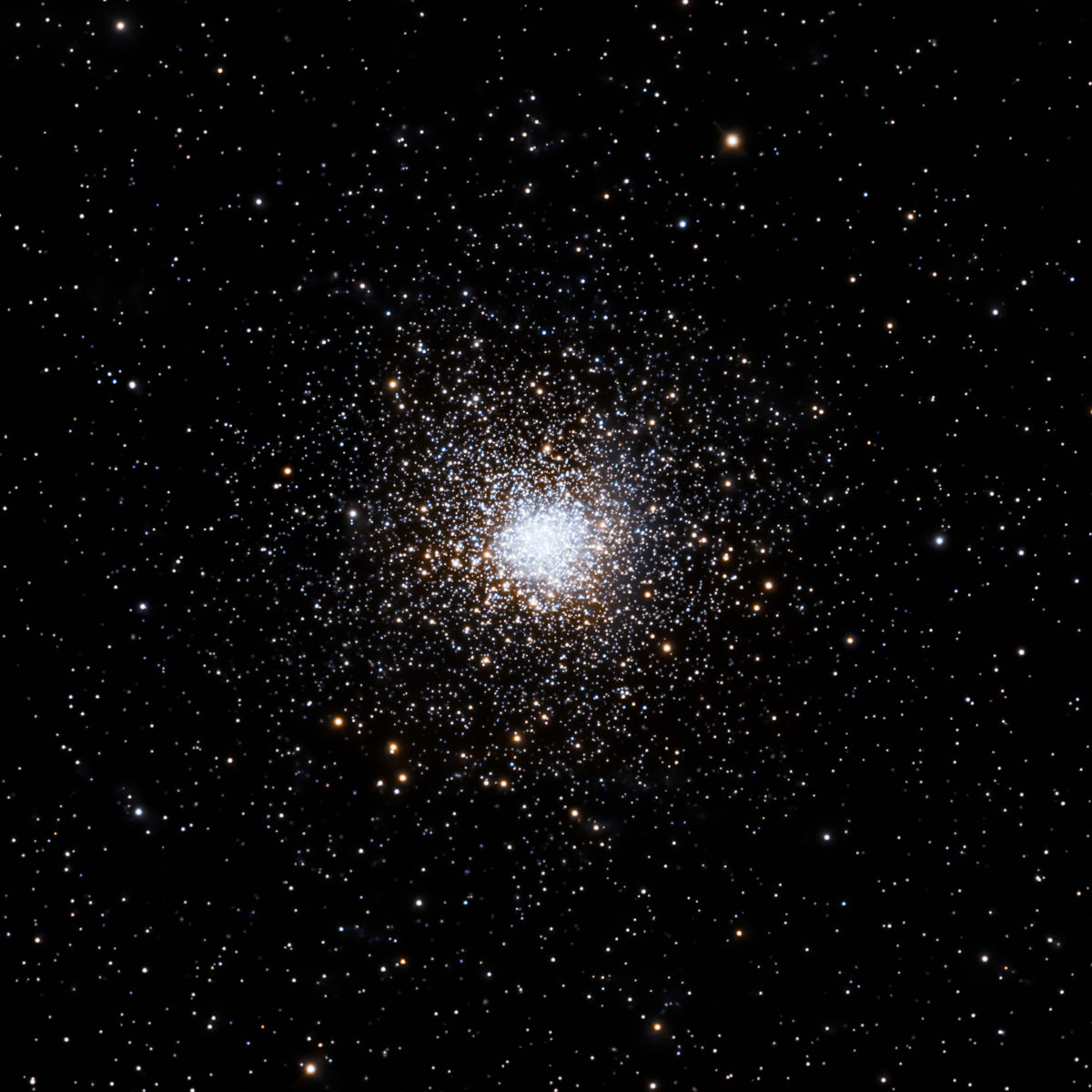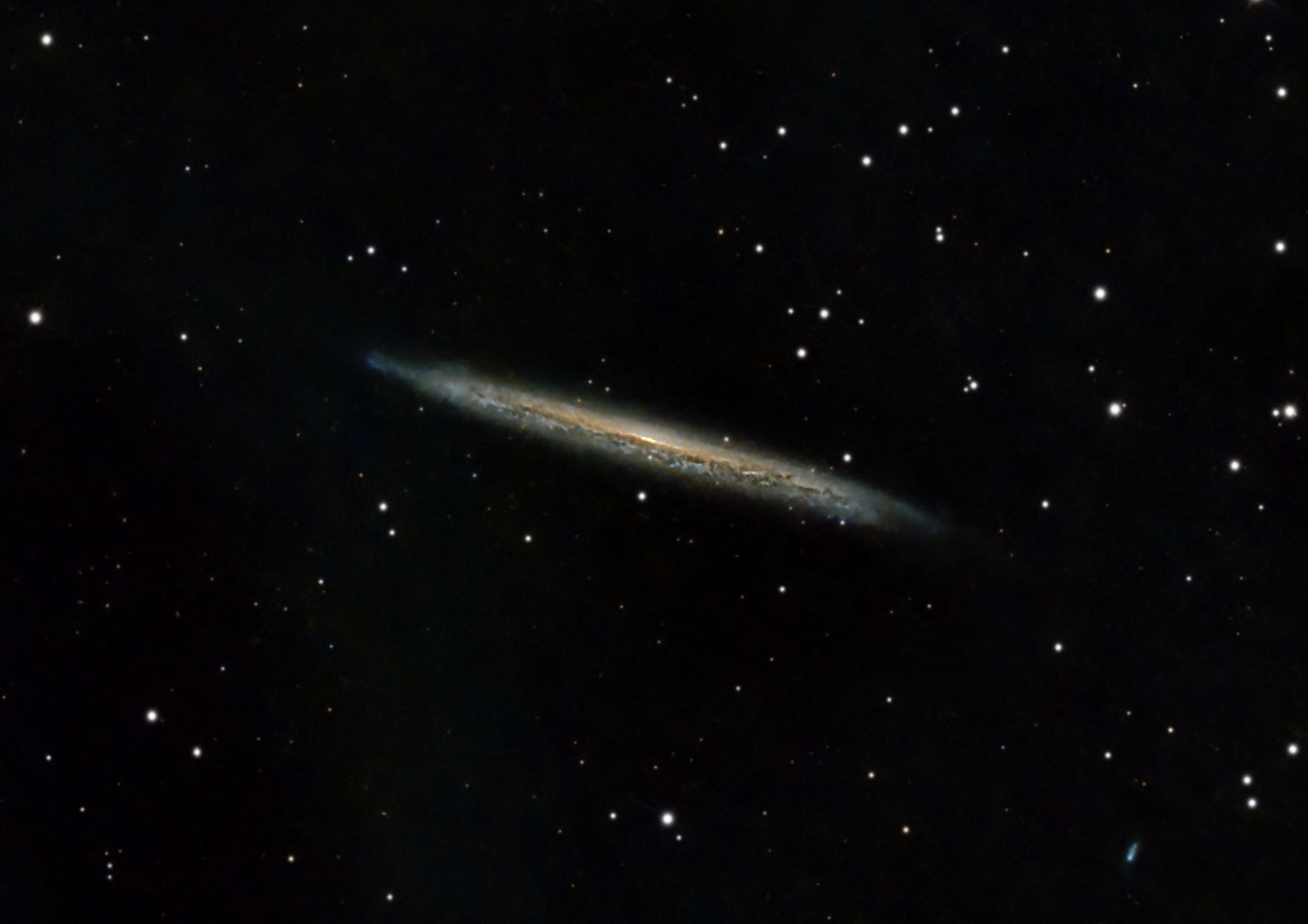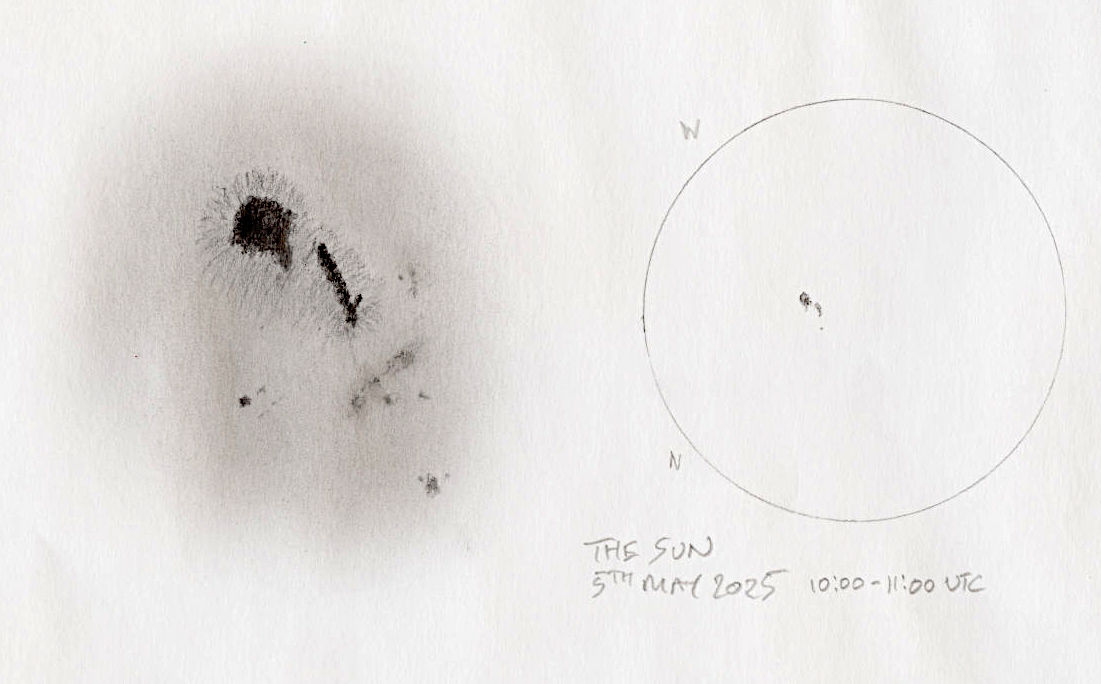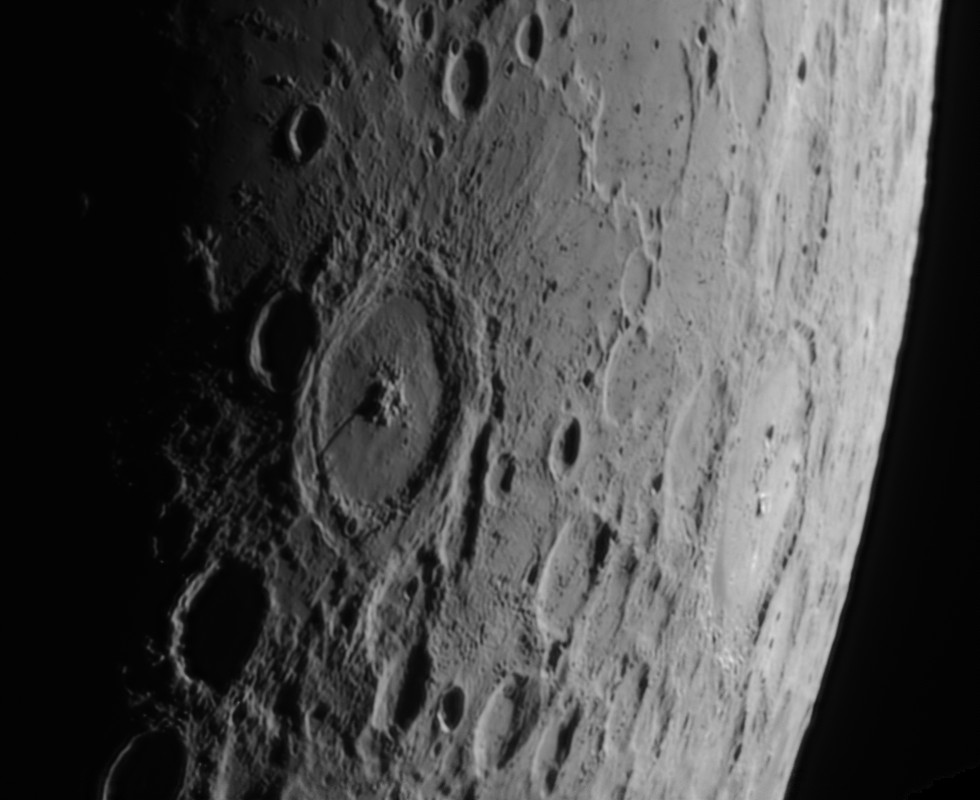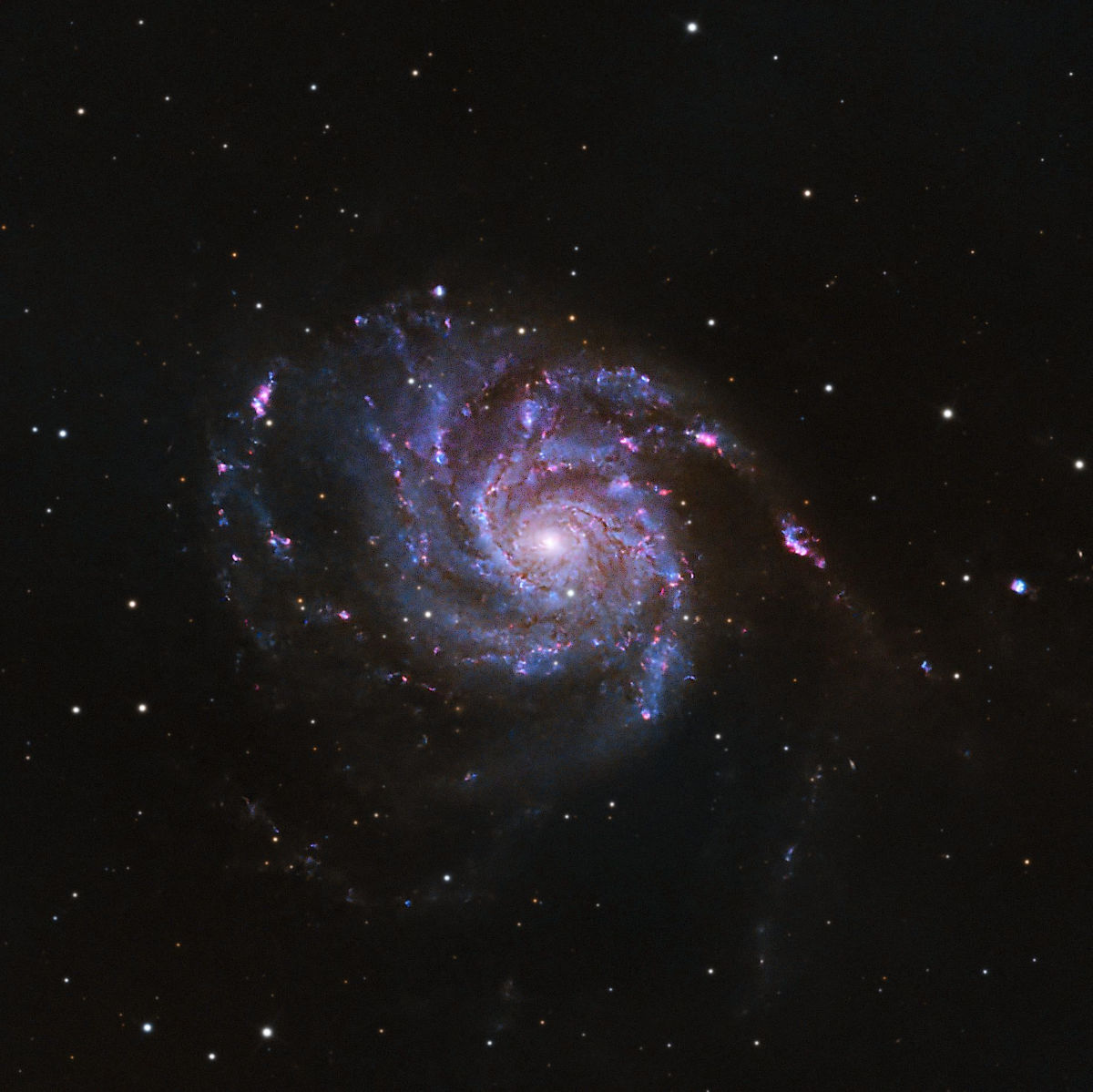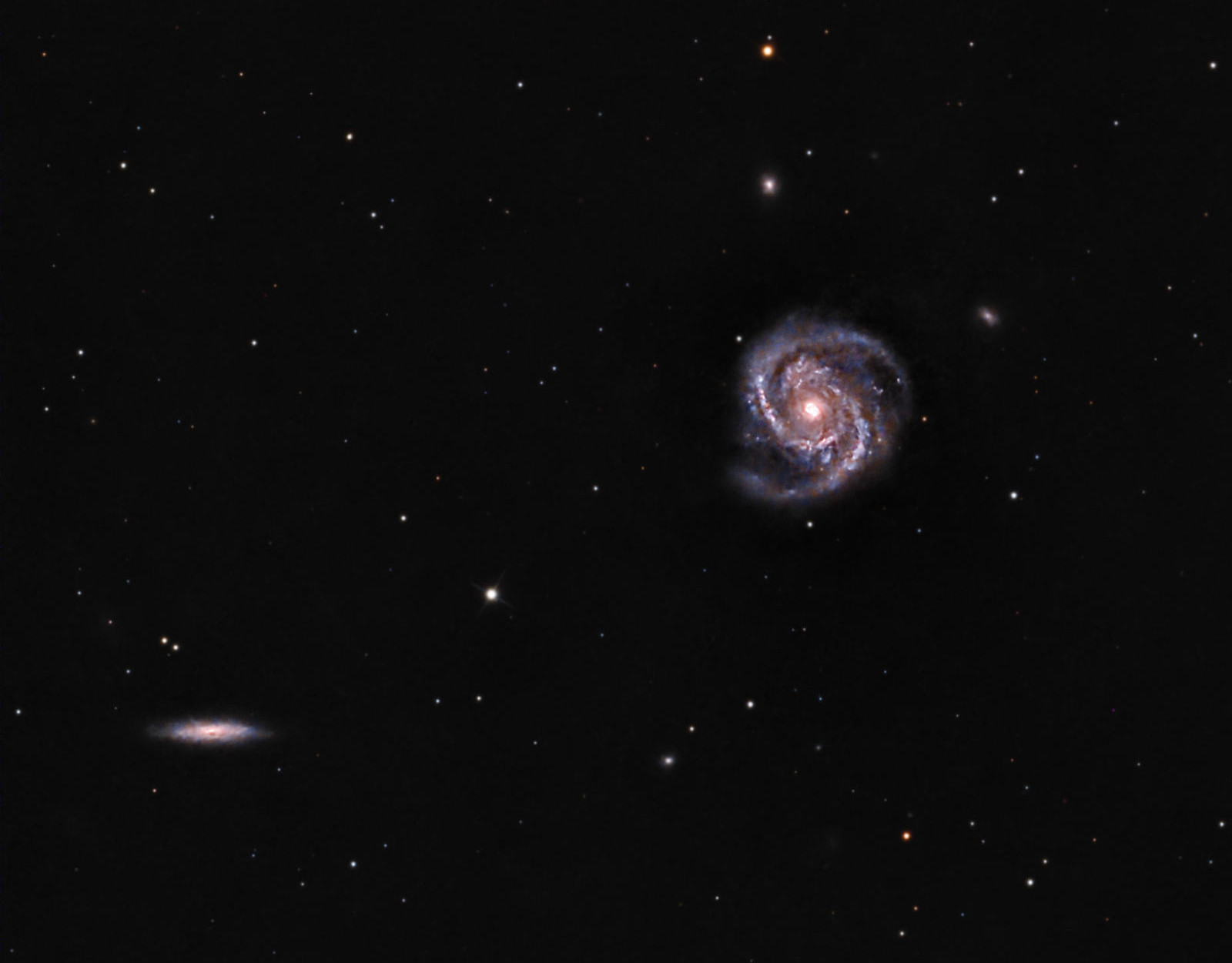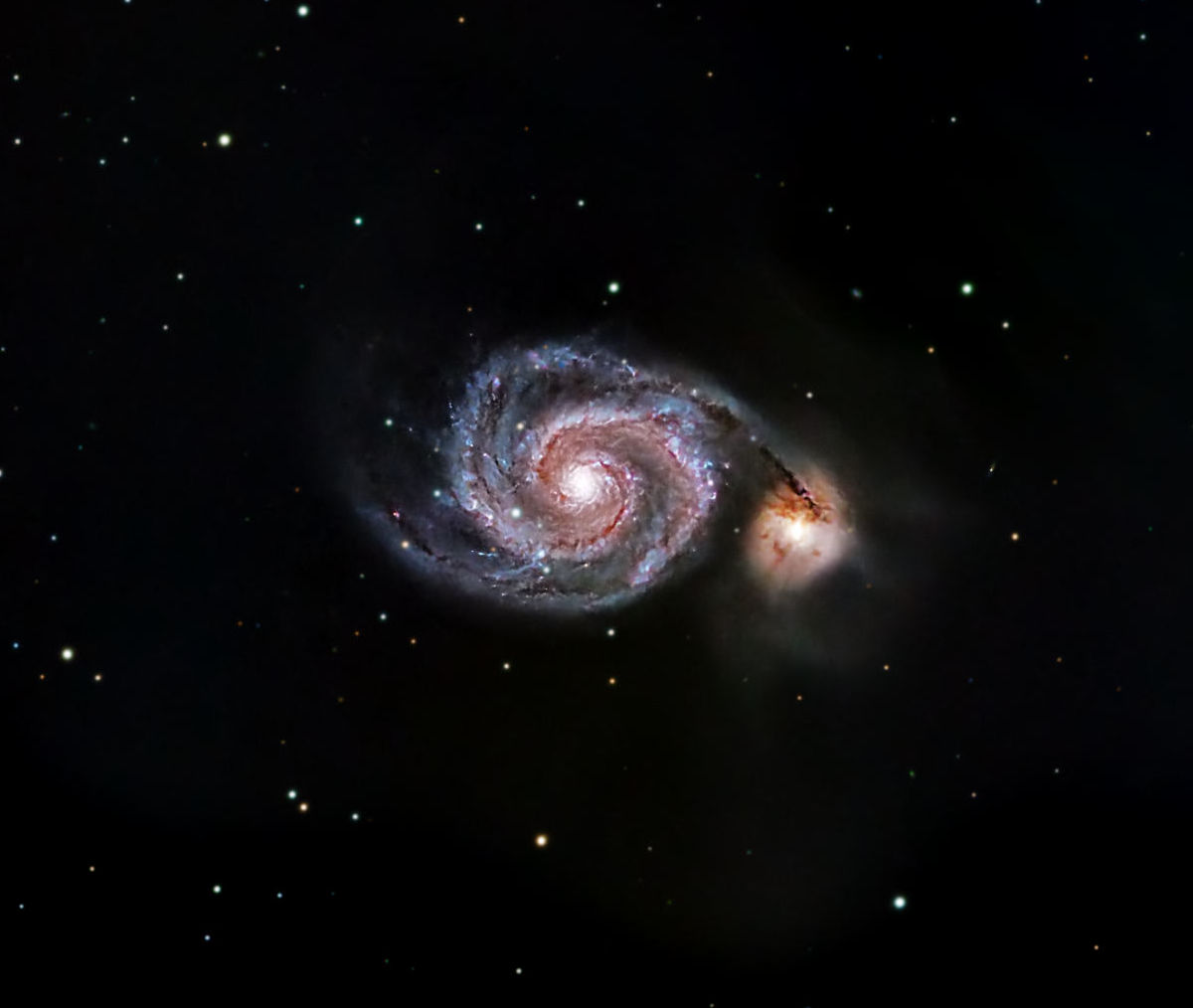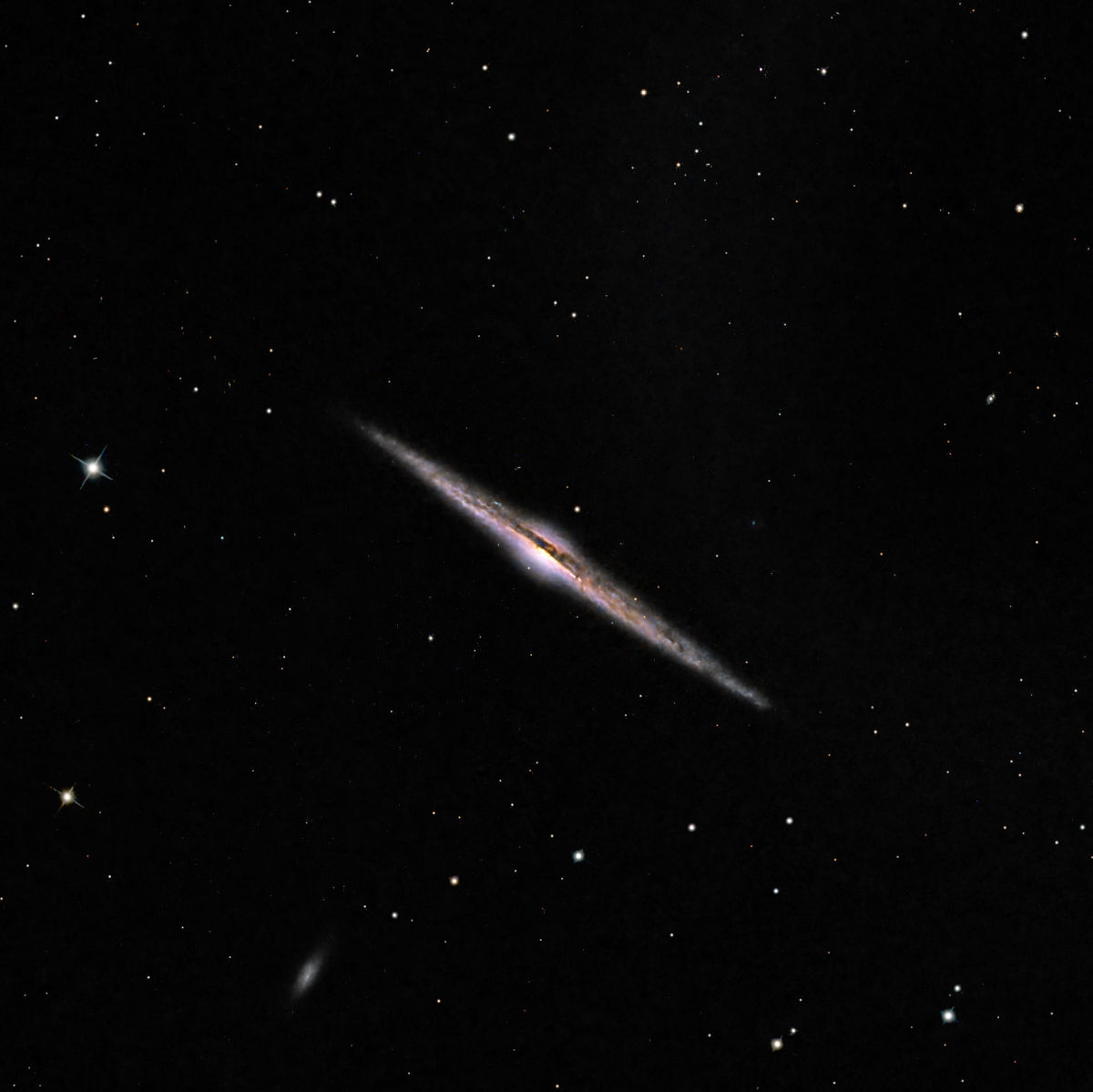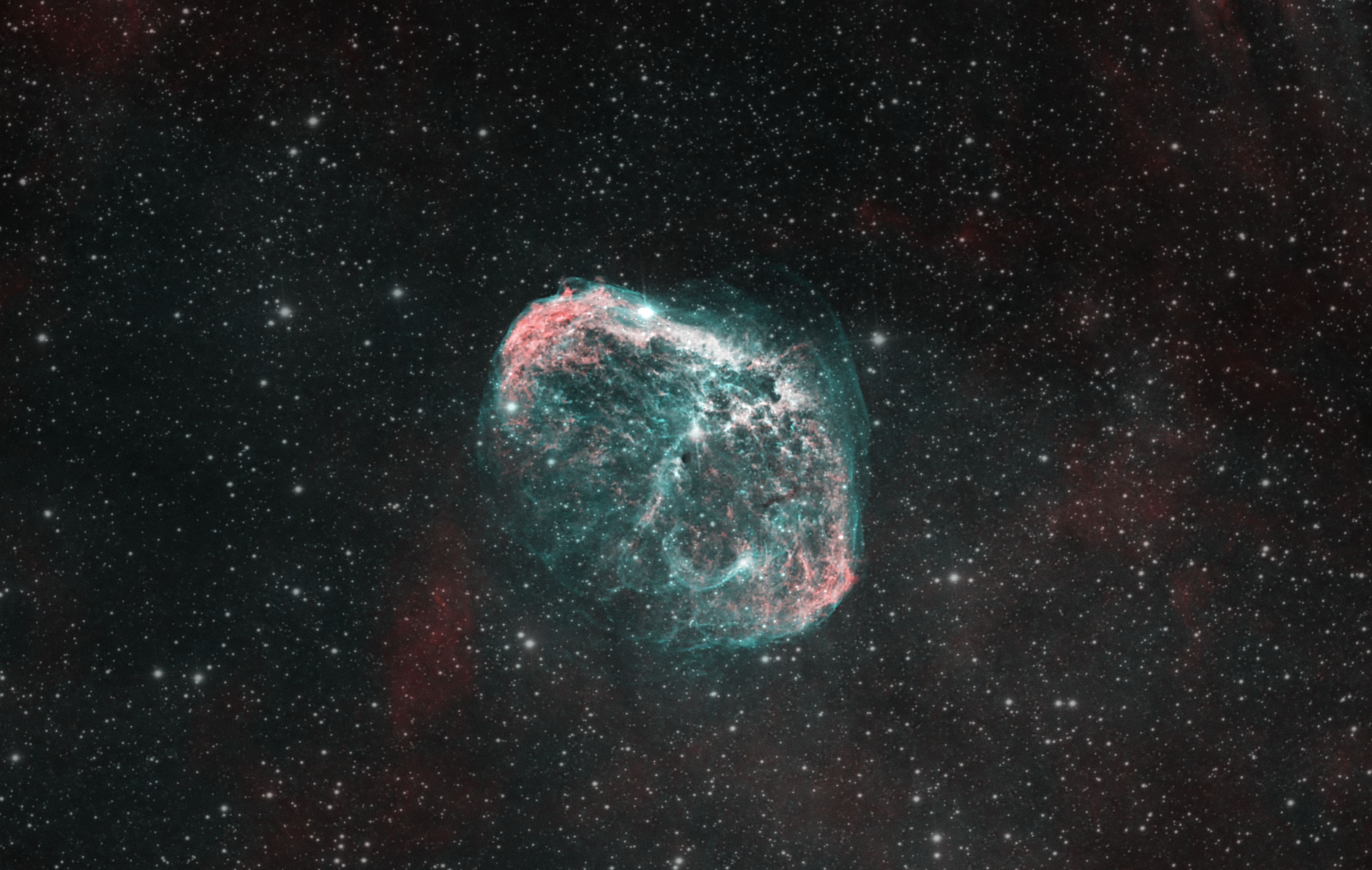
Details
- Rig: ASI 1600MM Pro + Sky-Watcher 200 PDS
- Software: NINA/PixInsight - Software Set 2
- Filters: ZWO 1.25" - Narrowband set 1
Integration time:
* SII 38 x 300s (190m)
* Ha 50 x 300s (465m)
* OIII 134 x 300s (670m)
* Total: 1325m/22h05m
Notes
9th August 2022 Gathered more Ha data to take total integratime time over 20 hours. Only two dropped frames on a night of varying transprency where I nearly closed the observatory prior to imaging because of the amount of approaching cloud. I decided to let it run and let NINA handle re-centring etc should it be required. Now ready for processing.
* Ha 50 x 300s (250m)
8th August 2022 Gathered more OIII data to enhance halo.
* OIII 48 x 300s (240m)
7th August 2022 Gathered more OIII data to enhance halo.
* OIII 48 x 300s (240m)
20th July 2022 Catching up with some processing and making rough drafts of waiting data (no denoise, deconvolution, nor much post-processing). I am finding this a good way to keep imaging sessions fresh in mind between capture and processing.
23rd June 2022 MORNING UPDATE Another 2.5 hours of data gathered last night, again with no dropped frames. Strangely NINA stumbled at the start and failed to autofocus before starting to expose. Logs to be checked. I should now have around 10 hours of data.
22nd June 2022 PROSPECTS The second half of the night is forecast to be clear which will leave just 60 - 90 minutes of imaging time. As a test I will configure a sequence to run, more as a test of how NINA performs in variable conditions than in hope of getting any significant integration time. I have also added the Patriot Astro back up script as the final instruction before powering down the PC. UPDATE The PHD2 debug log confirmed that no guide star was available when guiding was attempted between 23:36 and 23:47. Thereafter the guiding was seamless with logged periods showing RMS of 0.16 to 0.27 arc seconds per pixel. This is without having configured PPEC but as the figures are so good I am not in a hurry to change things. MORNING UPDATE Yet another clear night once the clouds had cleared sometime after nautical dark had fallen. The automation worked perfectly unsupervised from start up, through capture to final shutdown at nautical dawn. Another 29 subs gathered so now up to around 8 hours on this target. There was a plate-solving issue with Astap at the start of the sequence, possibly due to clouds. To be examined in the logs.
21st June 2022 MORNING UPDATE Last night was beautifully clear, if short, with 31 five-minute subs gathered and not a single one lost to weather or guiding issues. Now at 5.5 hours of integration time and a possible 2.5 hours from another forecast clear night this evening. The sequence now has all the correct steps in the correct places.
20th June 2022 Two clear nights in prospect so I intend to gather more data on the Crescent Nebula. The Met Office and Clear Outside disagree on the forecast so confidence in the forecasts’ accuracy is not 100%.
Tonight’s sequence is:
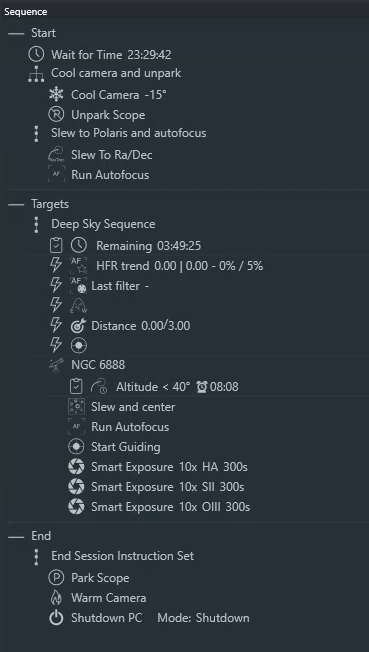
NGC6888 Sequence
The guiding log from the last session suggests that the guiding issues were caused mainly by lack of transparency with the influx of clouds. Guiding at around 0.4 arcsec/pixel is not stellar but ok. The effect of the clouds which arrived at 2am is clearly visible in the PHD2 log.
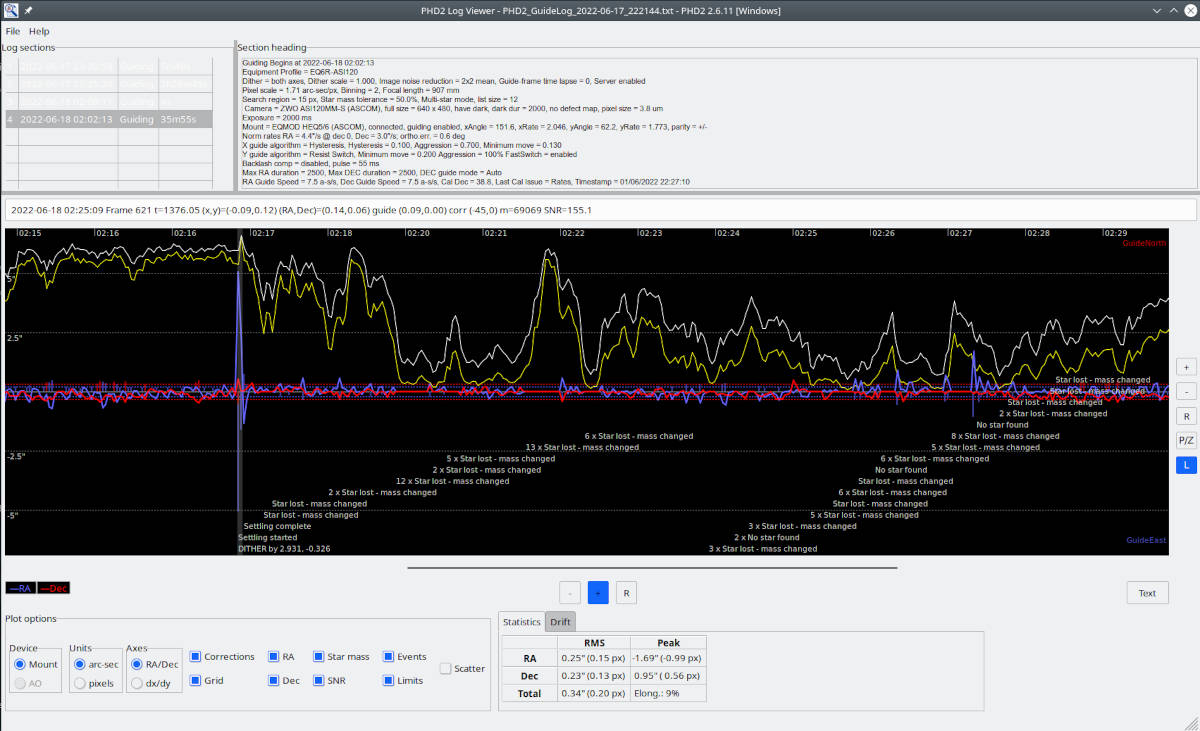
PHD2 Log
17th June 2022 23h40: The sequence is running. Some strange behaviours which seem to be fixed now - the autofocus failed and the guiding seems really lumpy with odd severe spikes. To be investigated. Cloud forecast from 2am so a short night in prospect.
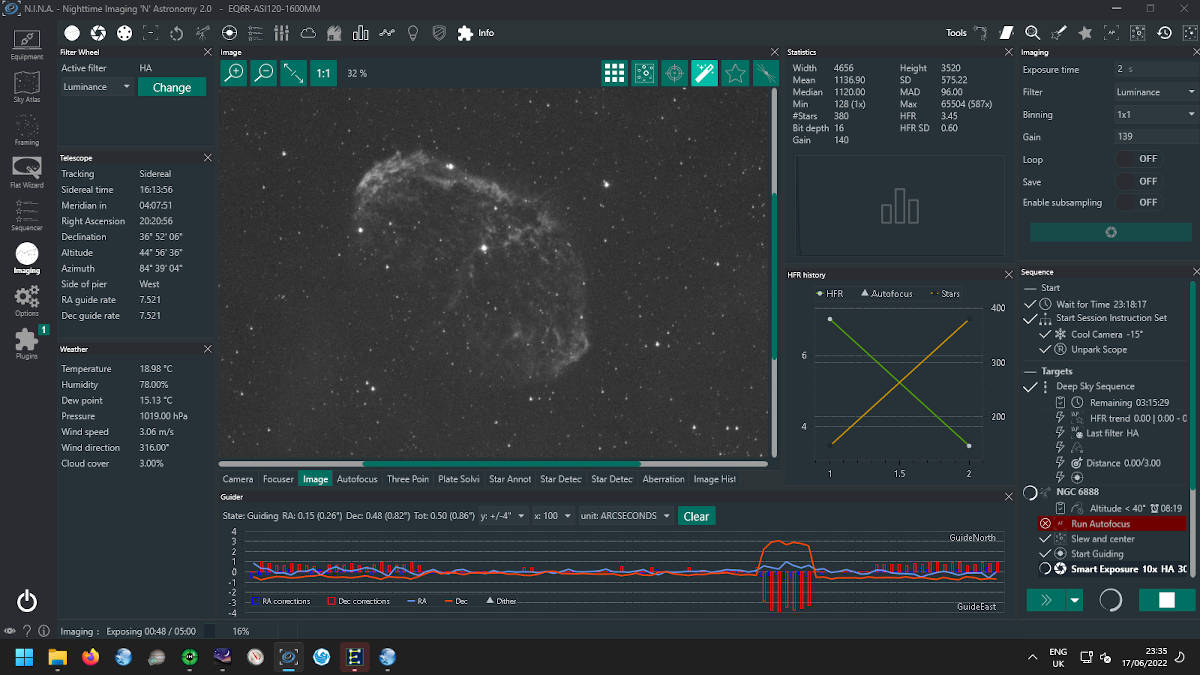
18h00: Tonight is the start of of new project. The moon is at 81% and the clouds promise to arrive before nautical dawn so the prospects are not great! I have chosen a narrowband target to mitigate the effect of the moon light. This will form initial data to be added to over the summer.
